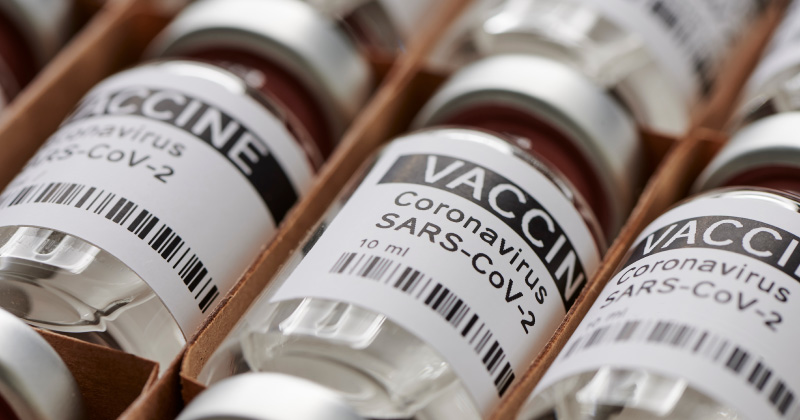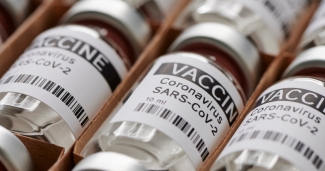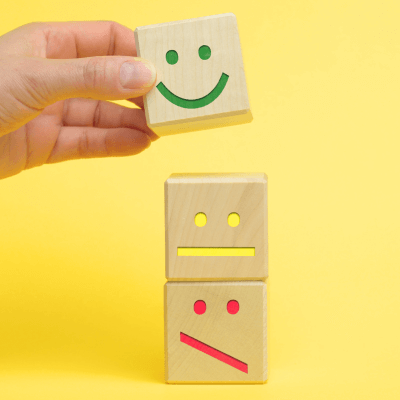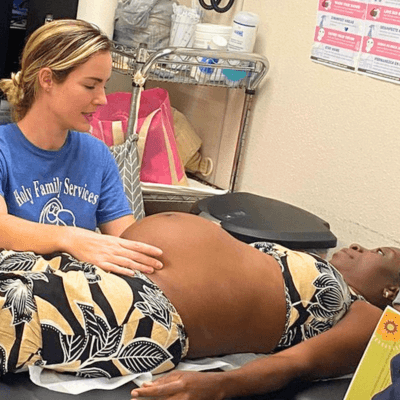Q&A: One-Shot COVID-19 Vaccine Expands Opportunities to Prevent Death & Severe Disease

Within the coming days or weeks, the FDA is expected to give emergency use authorization for the manufacture and sale of Johnson and Johnson’s (J&J) COVID-19 vaccine. The new vaccine is largely considered a game changer for harder-to-reach populations. Unlike the Moderna and Pfizer/BioNTech vaccines, J&J vaccine is not using mRNA, but instead utilizes a “viral vectored” approach, wherein the human cells are pushed to make the SARS-2 virus spike protein, which then triggers the immune response. Here, Migrant Clinicians Network’s Chief Medical Officer, Laszlo Madaras, MD, MPH, responds to the introduction of the third COVID-19 vaccine, and its potential impact for migrants and immigrants.
Claire Hutkins Seda: We’re frequently hearing that the one dose aspect of the J&J COVID-19 vaccine is a gamechanger. What changes when the dosage goes down to just one?
Dr. Laszlo Madaras: Yes, the option of just getting one shot is extremely important. Many people, like migrant farmworkers in the US, or refugees fleeing for safety, may be unable to return to the same place after a certain number of days to get the second dose of a vaccine. Even those who are geographically stable struggle to get two doses. In some cases, there may be a vaccine shortage for the second dose; in other cases, workers cannot afford to take two days off of work. Even in areas with mobile clinics, it is significantly easier, less expensive, and likely more effective for them to be able to complete the vaccination process at one sitting. Loss to the second follow-up will no longer be an issue, and it’s possible that patients may be more willing to take the vaccination knowing that they don’t have to figure out how to get the second one – it will really help make sure that some of our most vulnerable have easier access to an effective way to avoid death or severe disease from COVID-19 through vaccination.
CHS: And refrigeration is another big aspect here.
LM: Yes, we have already seen how refrigeration has been a limiting factor to get this vaccine to our more rural communities. To bring equity into the vaccine distribution we need something that will work better for areas that cannot keep it at minus 70 degrees. The very low temperatures needed to keep the vaccines viable make it really challenging to get to clinics. Additionally, a one-dose without refrigeration concerns eliminates all the trouble we’ve been having with the longevity of this vaccine. We don't have to have to worry about potentially wasting the vaccine due to temperature control.
CHS: There’s been concern that this one-shot vaccination isn’t as effective as the first two.
LM: The bottom line is that this vaccine is very effective – in clinical trials, there were no hospitalizations or deaths from COVID-19. That is significant. None of the trial participants died or were hospitalized. It was shown to be 85% protective against severe disease. That’s what we need right now from a vaccine. We need to bring the rate of death down significantly and we need to ensure people don’t get so sick that they have to go to the hospital. This vaccine clearly fits that bill. And yes, it is true that the J&J one-dose was shown to be 66% protective against disease overall, and this feels like a big step down from the other two, which had such high efficacy rates. But there are a few things to that percentage. One is that the J&J clinical trials occurred after COVID-19 variants were already in circulation, variants that were not around, as far as we know, when the Pfizer and Moderna vaccines were being tested. We don’t know exactly how protective the earlier vaccines would be when faced with the COVID-19 variants. Additionally, it’s a little about perception. If the J&J one-dose were the first on the market, with an 85% protective rate against severe disease, we would be rejoicing at its effectivity. It’s really only in comparison with the two-dose higher efficacy rate vaccines that it seems low. If you compare it to the seasonal influenza vaccine, which annually is somewhere between 30 and 65% effective – not sure the exact numbers, but those are rough figures – that shows that all the current COVID-19 vaccines are very effective.
CHS: So, the J&J one-dose is quite effective. But the perception challenges are very real.
LM: Yes, and racial disparities in health care are longstanding and distressing. Many people have historical trauma from forced sterilizations and government-sponsored medical procedures or experiments. These are very real concerns that need to be addressed, both in the larger structure of our health systems, where structural racism persists, and on a one-on-one basis between health care provider and patient, so that trust can be built, and concerns can be voiced and addressed. That’s a way that we can start to fix these longstanding and damaging trust issues. The Pfizer and Moderna vaccines, in part because of their need for very low temperatures, have resulted in equity issues in distribution. The J&J vaccine can help us course correct so that we can build an equitable system where everyone has the opportunity to be vaccinated. And yes, the one-dose is slightly less effective, but, again – this is really critical – it was 100% effective in preventing hospitalization or death from COVID-19.
I think it’s also important to note that the J&J clinical trials included a wide population, including people with comorbidities and featuring a broader ethnic range, which better reflects the overall population.
So, yes, some perception issues that it is less effective do exist, and our clinicians will need to be open and aware of that, where it comes from, and how we can build trust around the vaccine.
CHS: How do clinicians, including outreach workers, build that trust, and make that space so that their community members can ask questions and make an informed decision around the one-dose shot?
LM: Work with trusted local community leaders, pastors, rabbis, and other clergy to reinforce the importance of these vaccines. Work with community health workers who know the local customs, languages, whether people listen to males or females, who can enter a house -- all the important cultural pieces that demonstrate respect and promote community.
CHS: So is the J&J really a gamechanger, the way folks have been talking about it?
LM: Yes, and not just here in the US, but from a global perspective. It could be truly lifesaving in resource-poor areas of the world where refrigeration is nearly impossible, due to random power outages and the inability to reach minus 70 degrees even on a good day. It could also be lifesaving in areas where, even in major hospital centers, there is non-existent or limited supply of oxygen tanks, so that COVID-19 prevention is even more crucial. I have worked in such places in Africa where we rationed oxygen use since we were not sure when the next delivery of oxygen would occur. The rainy season or damaged roads could prevent a delivery since the transportation of such a combustible gas is difficult. I can only imagine if I had to treat all these COVID patients in south central Pennsylvania without the ability to use oxygen. Our death rates would have been sky high.
Additionally, it has a huge impact for people who are migrating, or who have to travel distances to get health care – which is a good portion of the developing world’s population. When I was working in Gabon, people had to come on boats to get to the hospital to get vaccinations for their kids, so if they could make that journey just once and not twice, that would increase the chance of them making the trip. Traveling over mountains, encountering warlords, crossing rivers … Globally, reducing the amount of travel needed to get the vaccine has big impacts in way we don’t recognize in a more industrialized society.
Like what you see? Amplify our collective voice with a contribution.
Got some good news to share? Contact us on our social media pages above.
Return to the main blog page or sign up for blog updates here.
- Log in to post comments





